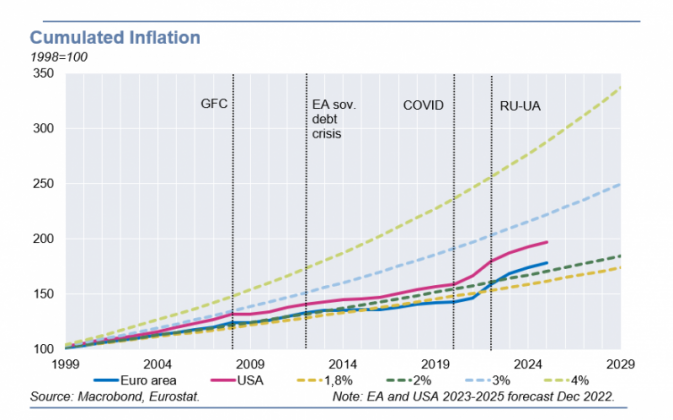

Against this background, there are many arguments against “tinkering” with central banks’ 2% inflation targets even moderately. These arguments can be subsumed into six groups:


Haldane, Andy, 2023, Central banks need to show a bit more imagination. Sticking rigidly to existing inflation targets risks snuffing out nascent growth, Financial Times, March 3 2023.
IMF, 2022, Countering the Cost of Living Crisis, WEO October 2022.